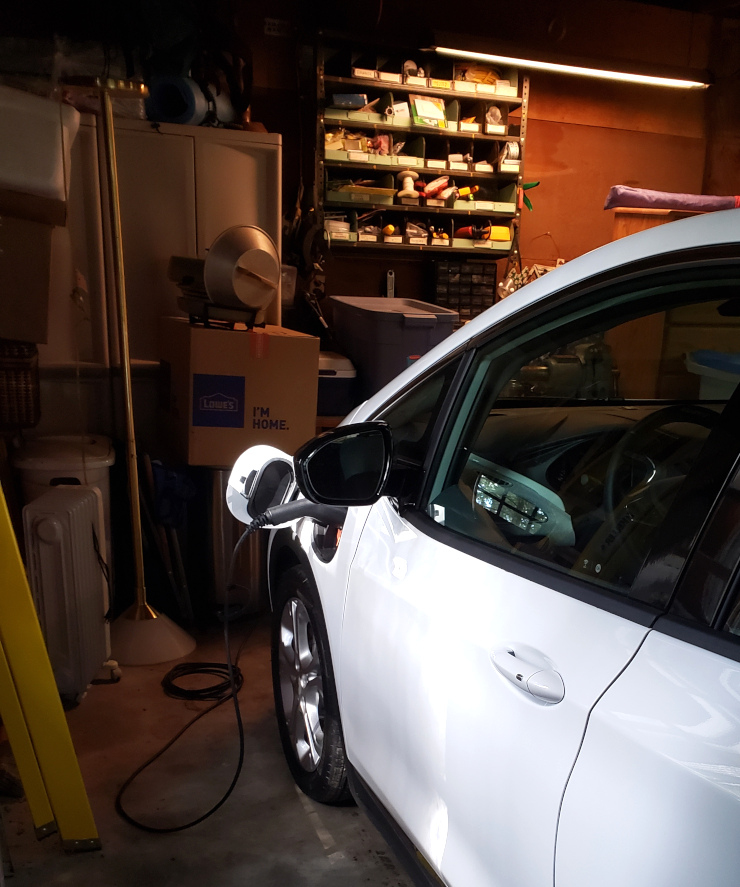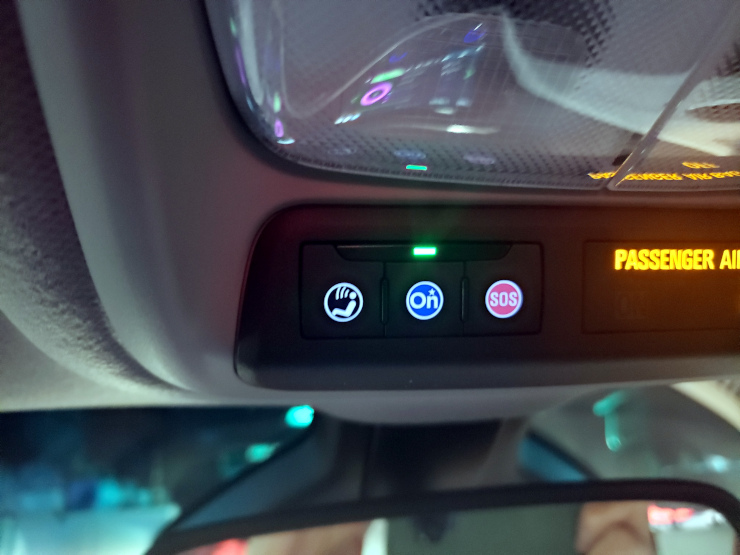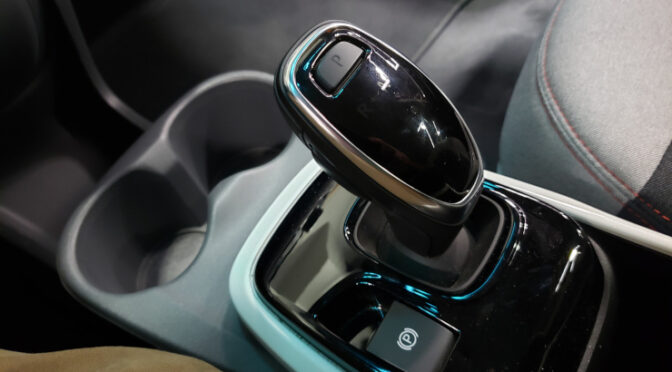In January 2020 I started shopping for an electric car, buying a Chevy Bolt at the end of March. This post is a collection of the handy tips I’ve learned along the way.
Use about 1/2 of the maximum range

I’ve read in several places that to get the longest life (in years) from any EV (Electric Vehicle) battery, I shouldn’t frequently charge it above 80% capacity or run it down below 30% capacity (I’m seeing more people recommend 20% as the limit recently). That means my typical range will be 50% of the battery capacity (80 – 30 = 50). For my 259 mile Chevy Bolt, that means the typical operating range will be about 130 miles between charges.
Of course on road trips I may need to charge to 100% to minimize the number of charging stops. As long as I don’t do that frequently, I should be fine.
On the other hand I read somewhere (I’ve lost the reference) that running my EV battery very, very low – even once – can reduce the life of the battery.
Charge at Home

It took a while to get it through my head that charging the Bolt is nothing like putting gas in a car. Instead of stopping just anywhere and fast-charging the car, it’s far cheaper to charge at home.
My post about Charging a 2020 Chevy Bolt Near Hillsboro, Oregon talks about the costs of charging at home and on the road. The upshot: charging on the road can cost more than 4 times what charging at home costs.
I’ve read that frequent DC Fast Charging can reduce the life of the battery. It’s better for the battery to charge it more slowly at home.
Charge while eating, shopping, or walking
Because DC Fast charging the Bolt on a road trip takes more than a half hour, it seems Bolt owners charge on road trips while eating or shopping. It’s a different rhythm than the grab-a-snack-and-go style of gas road trips.
I’m wondering whether EV owners typically gain weight from the long snack breaks, or lose weight from touring on foot while charging.
Use the “L” shift setting around town
The Bolt has a driving mode, inexplicably called “Low”, that uses regenerative braking. Once you’ve set the shift lever on “L” and are driving around, whenever you take your foot off the accelerator, the car uses electric braking to slow the car. That type of braking recharges the battery with the forward momentum of the car. One reviewer said that once they were used to regenerative braking, they found they use their brake pedal only once per day. Their brakes will last ages!
The owner’s manual recommends turning L mode off when on the freeway. One video I saw (I’ve lost the reference) claimed that having L mode on while on the freeway can reduce your range a little.
Don’t forget road taxes
I was really excited when I calculated a Bolt operating cost of 2 cents per mile! …but road taxes almost double that cost. Still, it’s a lot cheaper than running a gas car.
Because of EVs and more efficient gas vehicles, Oregon is moving toward a by-the-mile road use tax. The current way Oregonians pay for our roads is a gas tax and a car registration tax, which haven’t kept up with the cost of road repair.
The registration fee for my Bolt was about $220 for two years. On the other hand, I could pay my road taxes through Oregon’s volunteer by-the-mile system, which would cost $43 per year plus 1.8 cents per mile I drive.
Driving gas cars for years, I didn’t even think about how the roads are paid for. With an Electric Vehicle, now I’m thinking about simultaneously paying to drive my car and to repair the roads I’m driving it over. Makes sense to me.
Join several charging networks

Early on, I had expected to simply use my credit card to charge on the road. Not so much: While new chargers can accept credit cards, many older chargers are designed to only accept a charging network RFID card. On top of that, the card from one network generally won’t work in another, and there are a lot of different charging networks.
To be fair, most of the networks I’ve seen to let you call to charge your car, but I don’t feel comfortable reading my credit card information over the phone every time I want to charge the car on the road. So RFID cards is the path I chose.
Looking at chargers around Hillsboro, Oregon, I’ve joined Blink (lots of older chargers), ChargePoint (newer chargers), GreenLots (DC Fast Chargers), SemaConnect (some West Coast Electric Highway), and EvGo (DC Fast chargers) networks. I’ll probably join more networks when I plan specific road trips. See my post on Charging a 2020 Chevy Bolt Near Hillsboro, Oregon for details.
Don’t stress over road trip charging costs
In looking at charging costs around Hillsboro, I found a bewildering range. Charging can be free, cheap, or expensive; charging costs can be calculated per session, per minute, per kWh, or a mix of those numbers.
Watching road trip videos, it seems that there are few enough chargers in enough parts of the USA today that finding a working, unoccupied charger – while not difficult – is still far more important than finding an inexpensive charger. New chargers are going in all the time, so I expect within ten years we can all start thinking about finding that elusive, lowest-cost charger on road trips.
Heated seats and Remote Start are important features
Reading through the list of Bolt optional packages, I planned to skip the Comfort and Convenience Package, which includes heated seats and a heated steering wheel. The package seemed a luxury in the mild Pacific Northwest.
But watching Bolt owners’ videos and reading the Owner’s Manual changed my mind: I learned that cabin heating uses a lot of power and significantly reduces your range. The owner’s manual even recommends “Use the heated seat feature instead of climate settings. Heating the seat uses less energy than heating the vehicle interior.”
So I bought a Bolt that had the Comfort and Convenience package.
Update in 2023: Now that I’ve had the car 3 years, I find I use the heated wheel and heated seat all the time during the colder months, and rarely use the cabin heat.
Remote Start is a standard feature that I planned to ignore, again because the weather is mild here. Instead, I learned it’s a great way to pre-heat the whole car interior while the car is plugged in, so I use wall power instead of battery power and range to warm up the car’s interior.
The big surprise in all of this is that in a gas car, heating the interior just siphons waste heat from the engine – it’s free. In an Electric Vehicle, the battery and wheels don’t generate anywhere near a gas engine’s heat. Because of that lack of ‘free’ heat, the Bolt uses what amounts to an electric space heater to heat the interior, and that takes a lot of Watts.
Expect a few extra packages
Because we bought a Bolt that the dealer had on order, instead of ordering ours custom, our car has a few packages we hadn’t planned on buying. The only Bolt LTs the dealer had that had the Comfort and Convenience package also had the Driver Confidence packages I and II.
I had been against buying the Driver Confidence packages, but now that I’ve driven the Bolt a few months, I like them a lot. I especially like the blind spot warning indicators on the mirrors and the pedestrian alert feature (I expect that last one to be more important in the dark and rain).
“This Vehicle is in Demonstration Mode….”

Every time I started my new Bolt, a voice announced “This vehicle is in demonstration mode. Press the green OnStar button for more information.”
I looked up that message and found that you’ll keep hearing it every time you start the car until you either start your free OnStar trial or disable OnStar. I decided to go with the 1 month free trial.
When you want to activate your OnStar subscription, get comfy in your parked car and press the OnStar button. They’ll want your name, email, phone, address, etc. The process took me about 15 minutes.
When they asked for my credit card number, I said I didn’t give that out. They replied that it was optional (which they hadn’t mentioned earlier) and moved on. I got the impression that if I’d given my credit card details I would have gotten a 3 month free trial instead of a 1 month free trial.
I then received an email that linked me to the rest of the process of creating a My Chevrolet free account – which is the account that the MyChevrolet mobile app uses.
Now that I’ve done all that, my car no longer says anything when I start it. And there are some OnStar features that remain after the free trial ends. See the OnStar site for more information.
I have read claims that unless you explicitly call OnStar to disable all communication with your car, they continue to monitor – after your subscription has ended – a number of things that could give you privacy concerns. For now I’m not too concerned; I may change my mind in a few months.
“Battery Conditioning” isn’t mysterious
In watching Bolt owner’s videos, I was puzzled about the term “Battery Conditioning”, which shows up in one of the fuel analysis screens. I had no idea what the term meant.
Reading the Owner’s Manual, I found it: Battery Conditioning means “heating the battery in cold weather”. Batteries don’t like to be cold, and can be damaged by extreme cold. The Bolt has a battery heating system, which runs – even when the car is ‘off’ – in very cold weather.
Because of battery conditioning, it’s a good idea to keep the Bolt plugged in overnight in cold weather, to make sure you have plenty of battery charge in the morning.
Trickle Charging can be handy
In learning about charging a Bolt, I saw so much about DC Fast Charging and about Level 2 charging that I ignored the lowly Level 1 charging.
Level 1 charging uses an ordinary, 120 volt wall outlet, and adds about 4 miles of charge per hour the Bolt is plugged in. Some Bolt owners call this Trickle Charging. That 4 miles sounds tiny compared to the 25 miles per hour charging of Level 2 chargers, or the 100 miles per half hour of DC Fast Chargers.
But after I received a comment from a Bolt owner who charges at home exclusively on the included Level 1 charger, I looked at the numbers: 4 miles per hour means that 12 hours of charging gives you almost 50 miles – that’s great!
I’ve also seen road trip videos where the Bolt owner plugged their car into the house of the friend they were staying the night with, or plugged the car into the outside 120V outlet of the hotel they were staying at. The overnight charge gave them plenty of range to get to a DC Fast Charger in time for lunch.
You can also think of the Level 1 charger the Bolt comes with – plus a heavy-duty, outdoor extension cord that you add – as the 21st century equivalent of a gas can: That one time you’re really in trouble, you can use it to beg a few miles of range from a helpful stranger’s house or business.
Watch for tire wear
One assessment of Electric Vehicle service costs mentioned that Electric Vehicles can wear tires more quickly than gas cars, because the electric engine provides immediate torque. That article is the first I’ve heard of this effect, so I’ll keep an eye out for early tire wear.
I assume tire wear is another reason (besides range improvement) to avoid fast starts and stops.
Keep Pets off the Shift Lever

In the Bolt it takes just a tap on the shift lever to drop out of regenerative braking (L). Setting the parking brake takes a pull on another console button; going into neutral or reverse thankfully requires simultaneously pushing a side button on the shift lever. I imagine an enthusiastic or clever pet could cause problems.
I bought a Bergen Pet Travel Barrier to keep our dog in the back seat. It was a breeze to install in the 2020 Bolt. It’s not an absolute barrier, but I expect it can help teach Pippa to stay in the back seat.
Know your Electric Vehicle news sources
I was surprised by the strong biases I read in some auto news stories. Now that I’ve thought about it, I shouldn’t be surprised, given how disruptive Electric Vehicles promise to be to the oil and auto industries and how high the stakes are. After a bit of reading, I’ve found 3 camps of news:
- “Electric Vehicles won’t work” These news stories say how EVs aren’t selling, how the technology isn’t ready, how EVs are dangerous, how you should wait a year for phenomenally better EVs, etc. I’m guessing the oil industry influences these news outlets.
- “Tesla or Nothing” I keep seeing posts by abusive Tesla Fanboys, and have found news outlets that have a similar bias. I have two guesses about why: 1) oil industry shills masquerading as Tesla fans to trash talk EVs, or 2) Engineers who are so diversity-averse that they can’t even tolerate two different ways to pronounce “GIF”.
- “Pro Bolt” Every brand has fans. The Bolt is no exception.
So now I pay a lot of attention to where each news story is coming from and what the bias of the news source is.
References
- Clipper Creek article, Extending your EV battery life
- 2020 Chevy Bolt Owner’s Manual
- OreGo, Oregon’s by-the-mile road tax system
- Oregon Electric Vehicle and Vehicle Efficiency Fees
- EV Plug Life’s 5 tips for EV Winter Driving video, in which he talks about battery conditioning
- (no longer available) EV Plug Life’s Chevy Bolt Drive video, in which the owner talks about regenerative braking.
- OnStar’s plans page.

